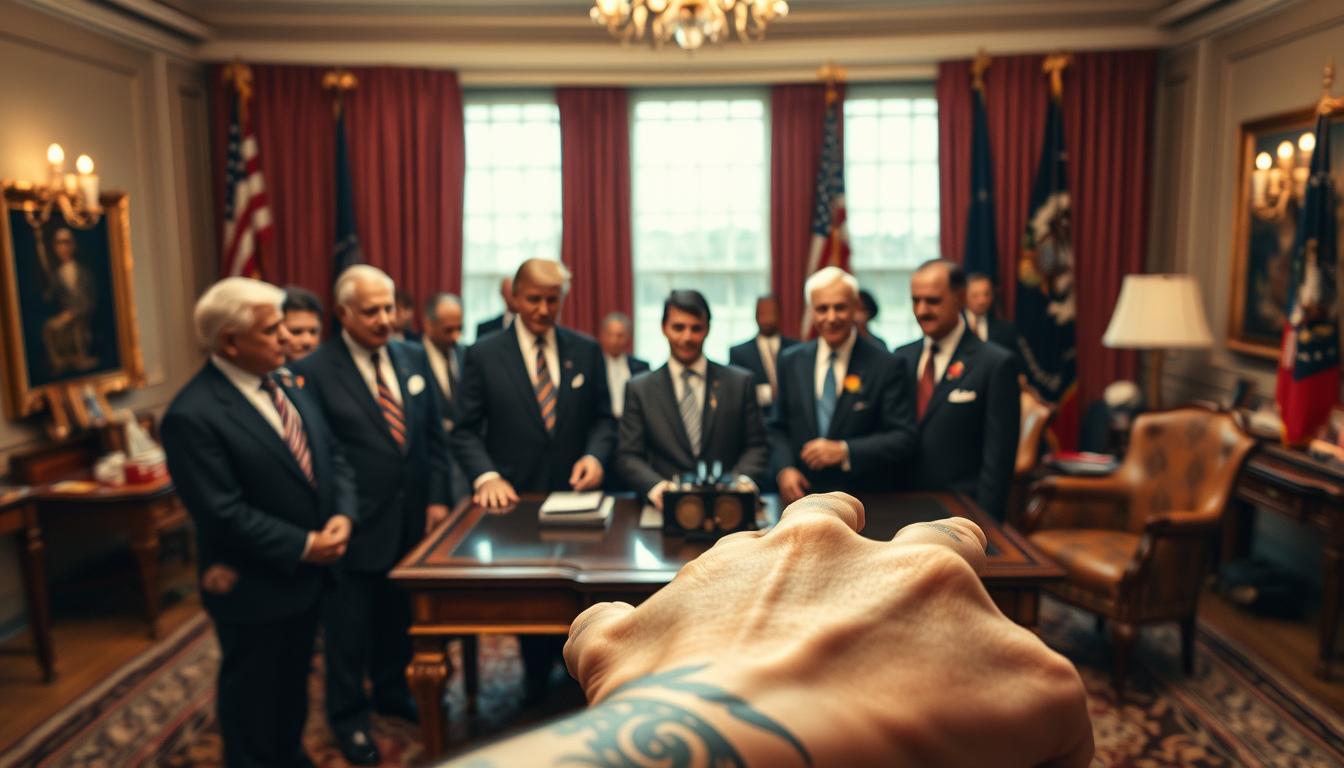
The fascination with presidential tattoos has grown as body art becomes more mainstream in American society. Historically, tattoos were associated with sailors and marginalized groups, but today they’re a common form of self-expression.
Some of America’s most revered leaders may have had ink hidden beneath their formal attire. While presidential tattoos aren’t widely documented, there are confirmed and disputed cases worth exploring.
This article will examine both verified presidential body art and those that remain the subject of historical debate, providing a unique lens through which to view American history and leadership.
Key Takeaways
- The evolution of tattoos in American society
- Confirmed and disputed cases of presidential tattoos
- The cultural context of presidential body art
- How tattoos reveal aspects of a president’s personality
- The rarity of presidential tattoos even today
The Surprising History of Presidential Ink
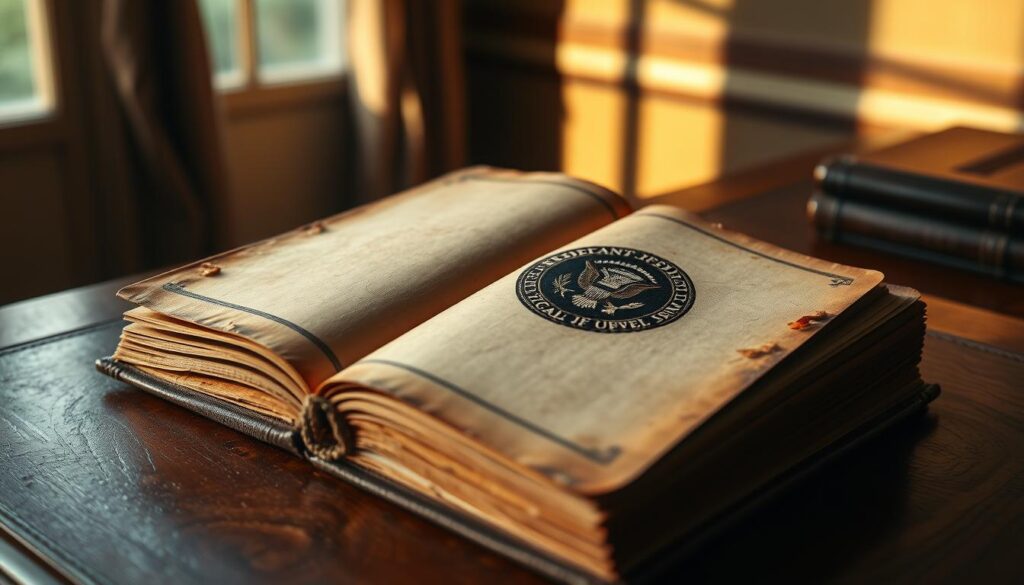
Presidential ink has a rich history that spans centuries, reflecting the complex and often contradictory attitudes towards tattoos in American society.
During the 18th and 19th centuries, tattoos were viewed differently across various periods of American history, ranging from taboo to acceptable in certain contexts. Naval and military service often exposed early American leaders to tattoo cultures around the world.
- Early American leaders were exposed to tattoo cultures through naval and military service.
- Presidential ink was typically kept private, reflecting the social norms of their times.
- Tattoos among the elite classes, including presidents, were often acquired during travels or military service.
As noted by a self-described “Polk scholar,” “Not only is there absolutely no recorded evidence that he had a tattoo, but everything I know about the man suggests he would be the last man to get one.” This quote highlights the challenges in verifying presidential tattoos.
“Not only is there absolutely no recorded evidence that he had a tattoo, but everything I know about the man suggests he would be the last man to get one.”
The history of presidential ink provides insight into how American leaders balanced personal expression with public image. It also tells stories about America’s relationship with other cultures and traditions.
| Aspect | Description | Historical Context |
|---|---|---|
| Naval and Military Influence | Exposure to global tattoo cultures | 18th and 19th centuries |
| Social Perception | From taboo to acceptance | Varying across different periods |
| Personal Expression | Balancing private and public personas | Throughout American history |
Have Any Presidents Had Tattoos? The Confirmed Cases
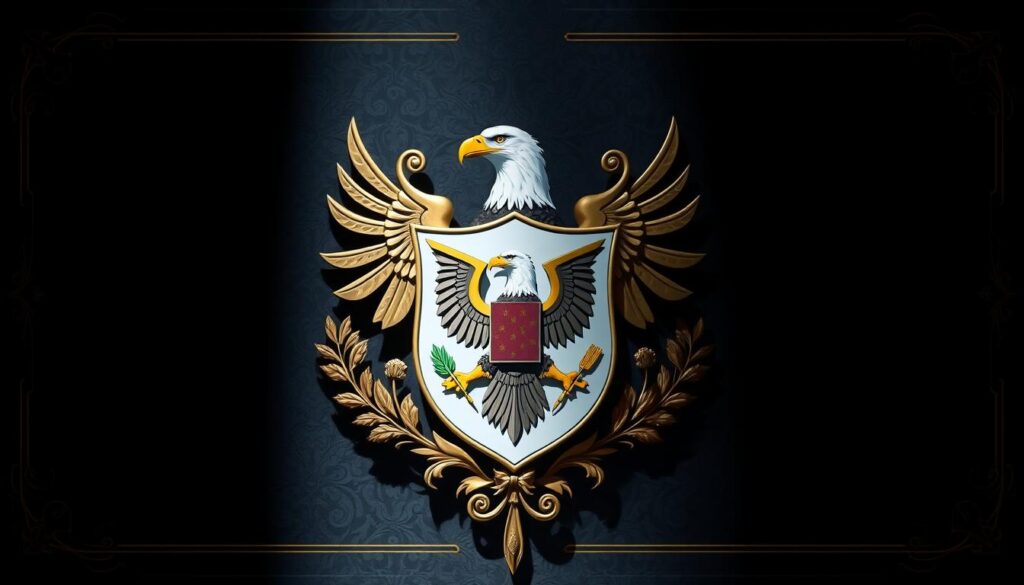
Delving into the history of U.S. Presidents, we find that a few of them have had tattoos, reflecting their unique personalities and experiences. While not all presidential tattoos are well-documented, there are a couple of notable cases that have been confirmed.
Andrew Jackson’s Tomahawk Tattoo
Andrew Jackson, the seventh U.S. President, is known to have had a tomahawk tattoo. This tattoo was a symbol of his rugged and adventurous life before becoming President.
Theodore Roosevelt’s Family Crest
Theodore Roosevelt, one of the most iconic U.S. Presidents, had a rumored family crest tattoo on his chest. This alleged tattoo was connected to his proud family heritage and his interest in heraldry. The crest would have symbolized his pride in his Dutch ancestry and family traditions.
- Theodore Roosevelt’s alleged family crest tattoo on his chest was a reflection of his proud family heritage.
- This tattoo would have aligned with his bold, adventurous personality and his embrace of “the strenuous life.”
- Family crests were significant among prominent American families in the late 19th century.
The existence of Roosevelt’s tattoo is still debated among historians, but it reflects his interest in heraldry and family lineage. The tattoo would have been easily concealed under formal attire, maintaining his public image.
Disputed Presidential Tattoos and Historical Context
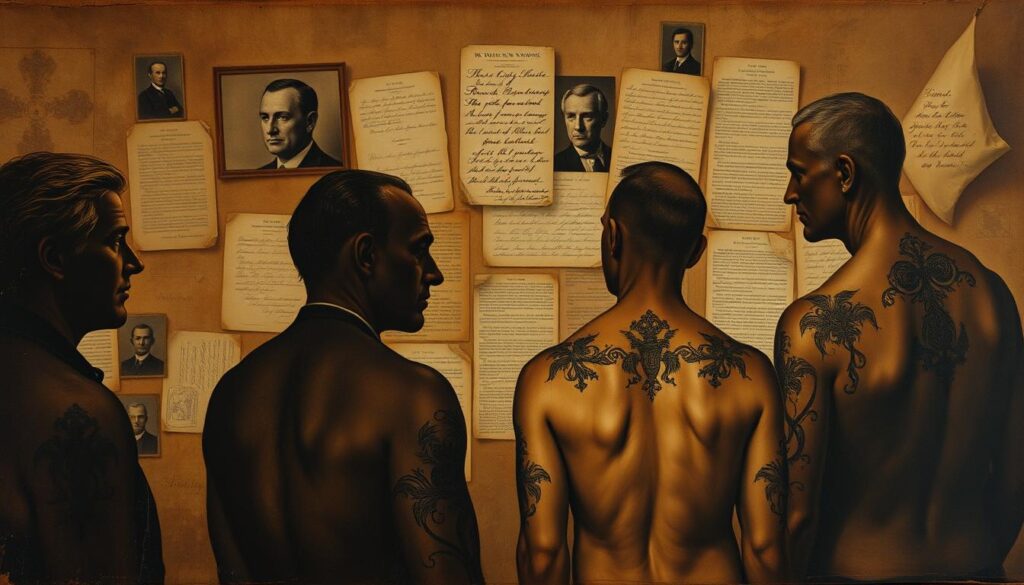
Disputed presidential tattoos offer a fascinating glimpse into the historical context of the time. The presence of tattoos among U.S. presidents has been a topic of debate, with some cases being more controversial than others.
James K. Polk’s Alleged Chinese Symbol
One of the most intriguing cases is that of James K. Polk, whose alleged Chinese symbol tattoo has sparked intense debate. While there’s no concrete evidence to confirm this tattoo, it highlights the fascination with exotic cultures during Polk’s era.
The Popularity of Tattoos in Different Eras
The popularity of tattoos has fluctuated significantly over time. From the mid- to late 18th century to the middle of the 19th century, high-profile individuals were turning to tattoos, influenced by naval and military exposure to global tattoo cultures.
| Era | Tattoo Popularity | Influencing Factors |
|---|---|---|
| 18th-19th Century | Increasing among elite classes | Naval and military exposure |
| Victorian Era | Surprising interest among upper classes | Cultural exchange and fascination |
The evolution of tattoo technology, from hand-poked methods to electric machines, has also played a significant role in their accessibility and popularity. As social attitudes toward tattoos have changed over time, so too has their cultural significance, influencing whether presidents would get tattoos and whether they would disclose them.
World Leaders Who Embraced Body Art
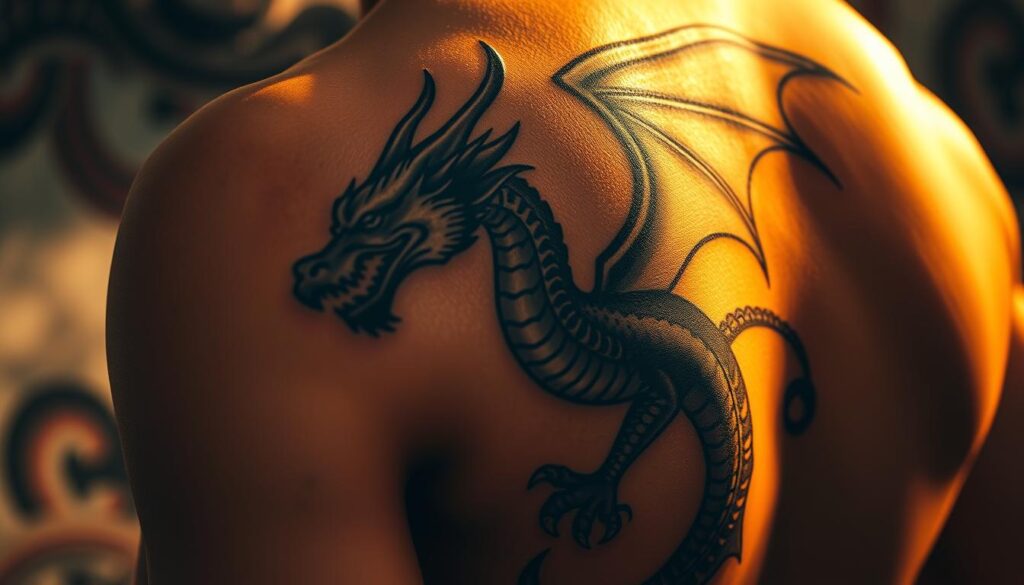
The world stage has seen its fair share of leaders with tattoos, reflecting diverse cultural influences. Several notable figures have embraced body art, making headlines beyond the realm of U.S. presidents.
Winston Churchill’s Anchor Tattoo
Winston Churchill, the iconic British Prime Minister, had an anchor tattoo. This symbol of stability reflected his naval experiences.
King Frederick IX of Denmark’s Naval Tattoos
King Frederick IX of Denmark had extensive naval tattoos, showcasing his maritime background and love for the sea.
Tsar Nicholas II’s Dragon Tattoo
Tsar Nicholas II acquired a vibrant dragon tattoo on his arm during his 1891 visit to Japan. This colorful tattoo was a souvenir, symbolizing Russia’s diplomatic efforts with Japan. As a leader traveling the world, Nicholas’s tattoo represented cultural exchange and the fashion for “souvenir tattoos” among European royalty.
Modern Politicians and Their Tattoos
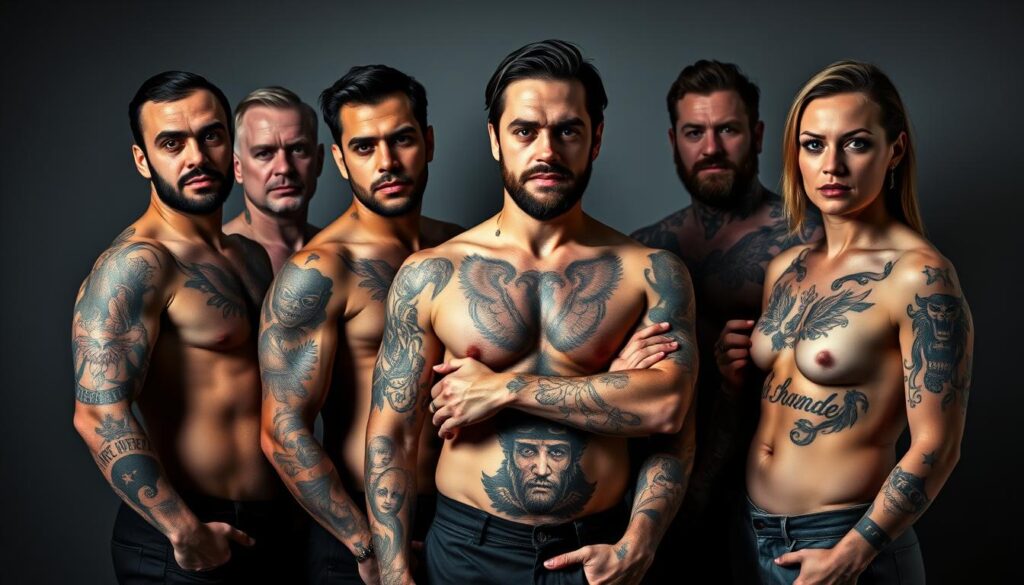
In recent years, the presence of tattoos among modern politicians has become increasingly visible. This shift reflects a broader cultural acceptance of body art and its growing significance in political branding.
Justin Trudeau’s Haida Raven
Canadian Prime Minister Justin Trudeau proudly displays a Haida raven tattoo on his left arm, symbolizing his connection to Indigenous Canadian culture. This visible display of cultural heritage through ink highlights the personal stories behind modern politicians’ tattoos.
Other Contemporary Leaders with Ink
Other leaders have followed suit, using their tattoos to connect with specific voter demographics or to reflect their personal narratives. For instance, some politicians use their body art to signify their cultural background or life experiences, making their public image more relatable and authentic.
The perception of tattoos on political figures varies, with some viewing them as a positive aspect of their image, enhancing their relatability and authenticity. The role of social media in showcasing these tattoos has also changed the dynamics, making them a documented part of a politician’s public persona rather than a hidden aspect.
The Significance of Presidential Tattoos
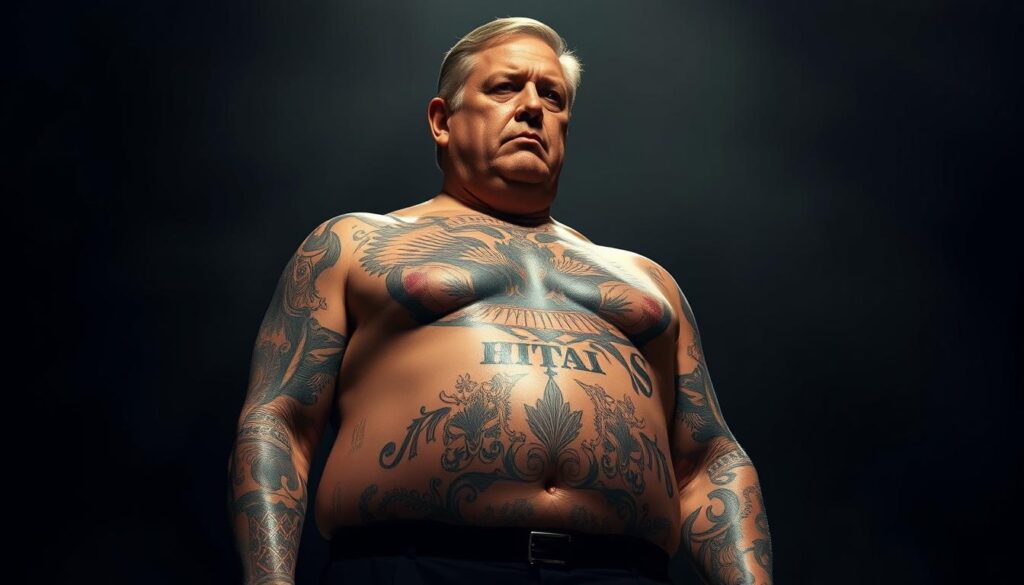
Exploring presidential tattoos provides a unique lens through which to examine the personal and public lives of U.S. leaders. These tattoos often carried significant cultural and historical weight, reflecting the complex interactions between the presidents and the world around them.
Personal Expression vs. Public Image
Presidential tattoos walked a fine line between personal expression and public image. On one hand, they represented a personal choice that reflected the individual character of the president. On the other hand, they were also subject to public scrutiny, influencing how the president was perceived by the American people.
Cultural and Historical Connections
The tattoos of U.S. presidents often had deep cultural and historical connections. For instance, some presidents had tattoos that reflected their engagement with Native Americans and indigenous cultures, highlighting the complex and sometimes fraught history between these groups and the U.S. government. Other designs, such as the dragon, symbolized America’s expanding global interests and international relations.
- Presidential tattoos connected leaders to specific cultural traditions and historical contexts, serving as a visual representation of their experiences and values.
- The choice of tattoo design often reflected the cultural exchanges occurring during their respective eras, showcasing the presidents’ attitudes toward other cultures and traditions.
- Studying these cultural connections provides insight into presidential worldviews and influences, offering a nuanced understanding of their leadership styles.
Why Presidential Tattoos Remain Rare
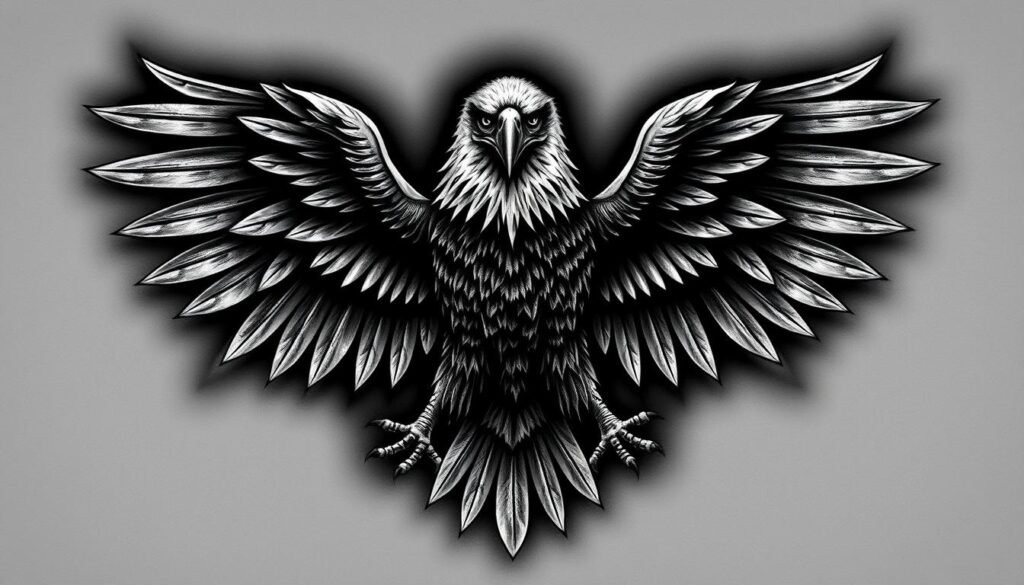
Despite the growing acceptance of body art, presidential tattoos have remained a rare phenomenon throughout American history. The formal expectations of the presidency have traditionally discouraged visible body modifications.
The conservative nature of American politics has also played a significant role in limiting the prevalence of tattoos among presidents. Tattoos were often viewed with skepticism, and for a presidential aspirant, having visible tattoos could be seen as risky.
Religious and moral considerations have further influenced presidential decisions regarding tattoos. Even presidents with military backgrounds, like Theodore Roosevelt, might have chosen to conceal their tattoos, such as a family crest, to maintain a more traditional public image.
The public scrutiny of presidential bodies has made tattoos a potential liability. Presidential candidates are often selected for their broad appeal, and distinctive tattoos might be seen as limiting their electability.
| Era | Attitude Towards Tattoos | Impact on Presidential Image |
|---|---|---|
| Early 20th Century | Tattoos were largely stigmatized | Presidents were expected to conform to traditional norms |
| Late 20th Century | Tattoos began to gain acceptance in certain circles | Some relaxation in expectations, but still conservative |
| 21st Century | Tattoos became more mainstream | Presidential image management began to allow for more individual expression |
The question remains whether a heavily tattooed man could be elected president in various historical periods. The evolving social status of tattoos has affected their acceptability for presidents, but the presidency remains a conservative institution.
In conclusion, the rarity of presidential tattoos can be attributed to a combination of factors, including formal expectations, conservative politics, religious and moral considerations, and the scrutiny of the public eye. As societal attitudes towards tattoos continue to evolve, it will be interesting to see if future presidents will be more likely to display their tattoos.
Conclusion: Presidential Ink Through the Ages
The history of presidential tattoos reveals a complex interplay between personal expression and public image. Some presidents, like Andrew Jackson with his tomahawk tattoo, have embraced body art. Even a simple dragon tattoo can provide insight into a president’s character.
